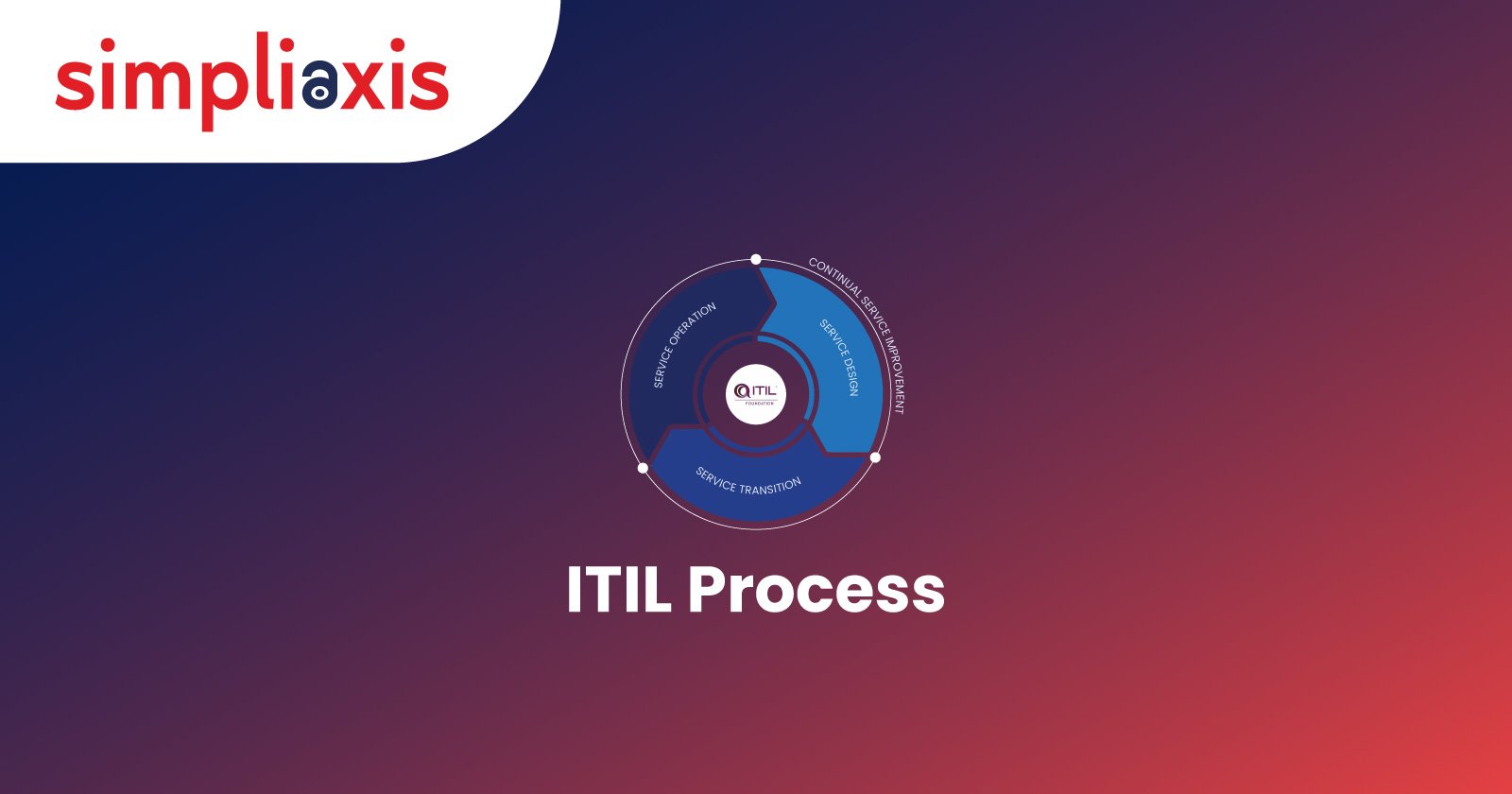The Information Technology Infrastructure Library (ITIL) process is a collection of best standards for providing IT services. It is really important to look at some of the important ITIL processes. ITIL ITSM processes formalize the selecting, scheduling, delivery, and maintenance of IT services to enhance performance and maintain certainty in service levels. Its initiation can be traced back to the 1980s as a federal program in the United Kingdom. The system is presently covered in five volumes that are updated regularly.
ITIL has evolved into the unofficial norm for IT service management. It enables enterprises in various sectors to provide performance-driven and cost-effective services. ITIL 4 processes the most current edition of the ITIL model, which was launched in February 2019. It is a considerable improvement over ITIL V3, which has been widely used for over a few years.
Whether you're currently on your accreditation path or just starting out in the domain of IT service, learning the fundamental ITIL service management processes, ideas and phrases will assist you in gaining familiarity with the essential components.
Key ITIL Process
ITIL Process list is categorized into five stages:
1. Service Strategy
The Service Strategy aims to establish a system life cycle strategy. The approach should be in line with the company's goals. This component's usability and guarantee are intended to ensure that the service is up to the job and suitable for use appropriately. It is critical to do this since these two factors give significance to the supply of services to clients.
As previously stated, each main stage includes subdivisions. The area of Service Strategy has four divisions.
a)Service Portfolio Management: A portfolio of services is the whole of services managed by the provider of a particular service. It is divided into three sections: Retired Services, Service Catalog, and Service Pipeline. Service Portfolio Management manages the process of identifying, describing, evaluating, selecting, and chartering services.
b) Demand Management: The demand management process focuses on understanding and impacting consumer demand. It consists of User Profiles, which reflect several average groups of users for a particular service, and Patterns of Business Activity, which indicate how people in various user profiles engage with a service over a certain period of time.
c) Financial Management: The financial management process enables the analysis and administration of service costs and possibilities. It consists of three essential activities:
Accounting - Keeping track of how much funds a service provider spends.
Budgeting - Budgeting is the process of preparing how a service provider's money will be utilized.
Charging - Obtaining money from clients for services rendered.
d)Strategy Operations: Strategy Operations ensures that services like fulfilling customer demands, addressing service faults, troubleshooting, and performing normal operational activities are carried out quickly and effectively.
2. Service Design
The service design lifecycle stage will be about designing services and their accompanying parts for deployment into the real system. The "Four Ps of Service Design" are areas that should be considered while creating a service. They are as follows:
People: The service necessitates the use of human resources and organizational structures.
Processes: Processes necessary for service management to facilitate the service.
Products: The service's technology and associated infrastructure are necessary.
Partners: Third-party providers of extra services necessary to support the service.
Service Design consists of seven processes.
a)Service Catalog Management: A catalog of services is a collection of services that are provided to consumers and users. It is sometimes the only part of the Service offering that clients see. It is frequently used as the entrance point for all data systems in the real world.
b) Service Level Management: Service Level Management is responsible for establishing and administering agreements between consumers and service providers about the performance level (usage) and dependability (guarantee) connected with certain services. Service Level Management leads to the development of Service Level Agreements (SLAs) among consumers and providers. Operational Level Agreements (OLAs) are operational agreements that are essentially equivalent to SLAs in essence.
c) Availability Management: The Availability Management process focuses on managing and meeting previously decided availability standards as defined in Service Level Agreements. The ITIL definition of "availability" is "the capacity of a platform, service, or configuration item to execute its role when necessary.
d) Capacity Management: Capacity Management relates to guaranteeing that cost-effective capacity remains at all occasions that meet or surpass the demands of the company as defined in Service Level Agreements. Capacity is described as "the maximal output a service, platform, or object can accomplish" in ITIL, and it is separated into three key activities: Service Capacity Management, Business Capacity Management, Component Capacity Management.
e) Service Continuity Management: The Service Continuity Management process assures that the service provider can always offer the pre-decided minimum service levels. It employs methods such as Management of Risk (MOR) and Business Impact Analysis (BIA). It leads to the creation of the Service Continuity Plan, which is a component of the larger Business Continuity Plan.
f)IT Security Management: IT security management relates to five fundamental characteristics of information assets:
Confidentiality: Confidence that the asset is only available to authorized parties
Integrity: Ensuring that unauthorized parties are not tampered with the asset.
Availability: Guarantee that the item will be used when needed
Authenticity: Certainty that the operations and the profiles of the people involved are authentic.
Nonrepudiation: Guarantee that once a transaction has been concluded, it cannot be undone without consent.
g) Supplier Management: Supplier Management ensures that third-party suppliers provide good value for money. It serves the same function as that of Service Level Management, however, about third-party suppliers instead of inner suppliers and overall consumers. Supplier Management oversees supplier assessment, contract negotiations, performance evaluations, extensions, and cancellations.
3. Service Transition
The Service Transition process's goal is to design and distribute IT services while ensuring that modifications to services and Service Management procedures are taken out in a cohesive manner.
The design is constructed, verified, and pushed into production during this five-stage of ITIL lifecycle stage to allow the business client to obtain the targeted value. This stage accounts change management by monitoring the assets and configuration objects (the foundational elements, like software and hardware) related to the proposed and altered systems, as well as service affirmation, running tests, and transition planning to make sure that people, support staff, and the production system are ready for product release. The area of Service Transition has seven processes.
a) Change Management - The goal with this processing activity will be to govern the lifetime of all modifications while causing the least amount of disturbance to IT services.
b) Evaluation - The goal of the Evaluation process is to evaluate important alterations, including the launch of a new service or a significant modification to a pre-existing service, before allowing those adjustments to advance to the next stage of their lifespan.
c) Transition Planning and Assistance - This process is concerned with planning and organizing the use of resources in order to deliver a big release inside the estimated cost, timeframe, and quality estimations.
d) Management of Releases and Deployments - The goal of this process would be to organize, arrange, and monitor the migration of releases to development and operational environments, assuring the stability of the operational environment and the distribution of the proper components.
e) Validation and testing of services - This process assures that issued releases and subsequent services match the needs of the consumer and that IT functions can facilitate the new service.
f) Asset and Configuration Management for Services - The goal is to keep track of the configuration pieces needed to offer an IT service, as well as their connections.
g) Knowledge Administration - The goal is to collect, evaluate, store, and communicate data and understanding inside an organisation in order to improve efficiency by eliminating the need to relearn knowledge.
4. Service Operations
This stage is concerned with satisfying end-users' requirements while optimizing expenses and identifying any possible difficulties. Fulfilling customer requests, addressing service outages, troubleshooting, and performing regular operational duties are all part of the Service Operations process. It's the only area out of the five that includes both functions and processes. There will be five processes and four functions under this area to consider.
a) Event Management (process) - The goal is to ensure those configuration items (CIs) and services are continually observed, as well as to classify and characterize events so that relevant actions can be taken.
b) Incident Management (process)—The goal is to manage all problems throughout their lifetime and get the IT service back to consumers as soon as feasible.
c) Request Completion (process) - The goal is to satisfy service requests, which are typically modest adjustments (such as queries to update a password) or information requests.
d) Access Management (process) - The goal is to allow authorized users to utilize a service while prohibiting unauthorized users from accessing it. The Access Management process is mainly responsible for carrying out policies set in Information Security Management.
e) Problem Management (process) - The goal is to manage the lifetime of all issues, avoiding occurrences and limiting the effect of those that cannot be avoided. To discover patterns or serious problems, Proactive Problem Management examines incident reports and data acquired by other IT Service Management procedures.
f) Management of IT Operations (function) - The goal is to observe and monitor IT services and their associated systems, as well as to carry out regular day-to-day duties linked to the functioning of infrastructure components and systems. Job scheduling, backup and restore, printing and output management, and periodic maintenance are all part of this.
g) Application Management (function) - Application Management is in charge of overseeing the lifespan of apps.
h) Technical Management (function) - Technical Management offers technical knowledge and training for IT infrastructure management.
5. Continual Service Improvement (CSI)
This phase aims to apply quality management systems to benefit from prior triumphs and mistakes. It strives to continuously enhance the efficacy and efficiency of IT processes and services by using the ISO 2000 notion of continuous improvement. In this domain, there is just one method with seven steps: identifying improvement solutions, specifying the metrics to be used, data collection, data processing, and data analysis, presenting and utilizing data-derived information, and using the data to improve.
Also, Check:
Conclusion:
The ITIL process is a collection of best practices for providing IT services, focusing on enhancing performance and maintaining service level certainty. Originating in the 1980s as a UK federal program, ITIL has evolved into the unofficial standard for IT service management across various sectors. It helps enterprises deliver services cost-effectively and efficiently. The latest iteration, ITIL 4, launched in 2019, represents a significant advancement over its predecessor. Understanding ITIL processes, from service strategy to continual service improvement, is crucial for effective IT service management. Simpliaxis offers ITIL 4 Foundation Certification Training to help professionals master these processes and excel in their careers.













 +1-361-998-9988
+1-361-998-9988


